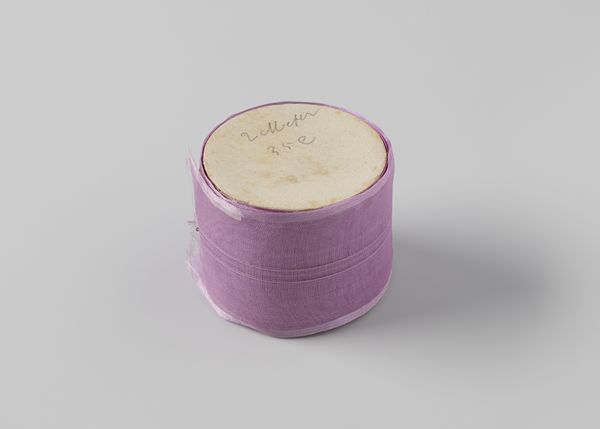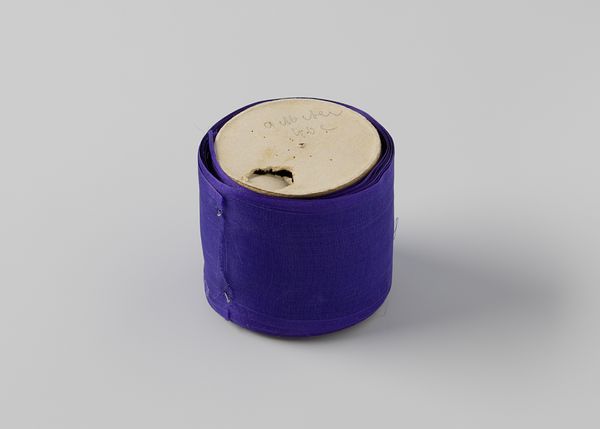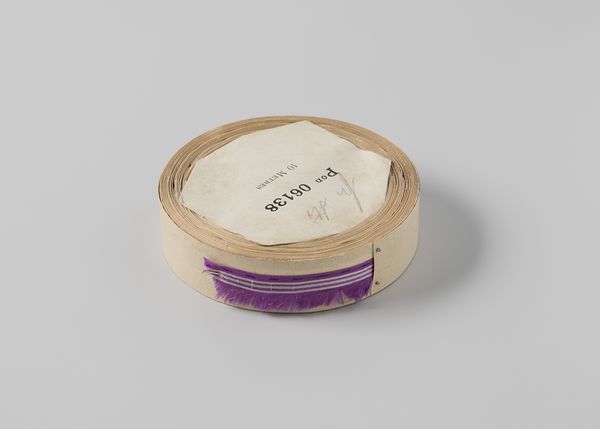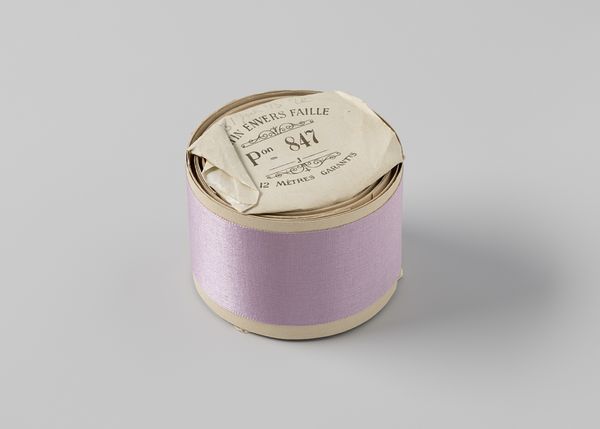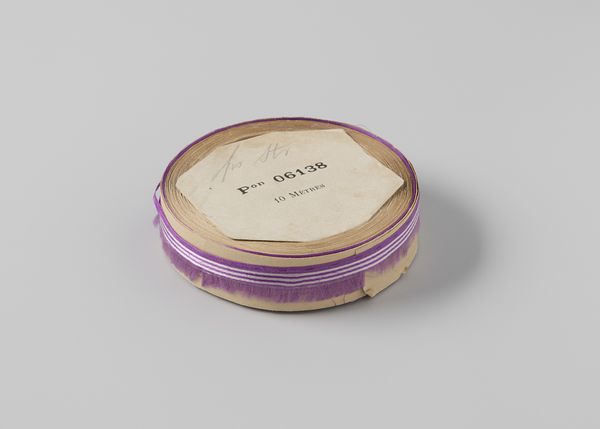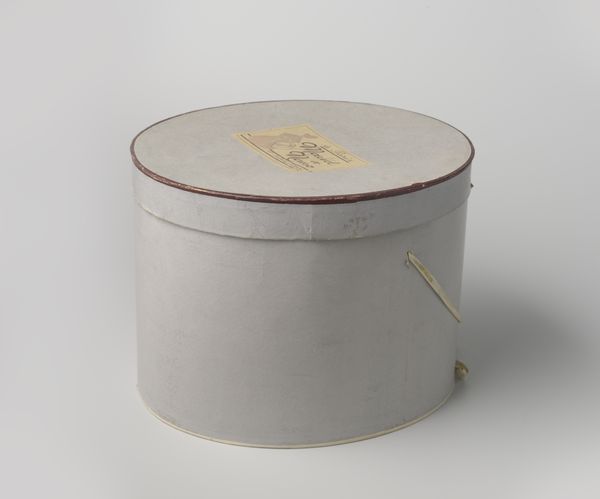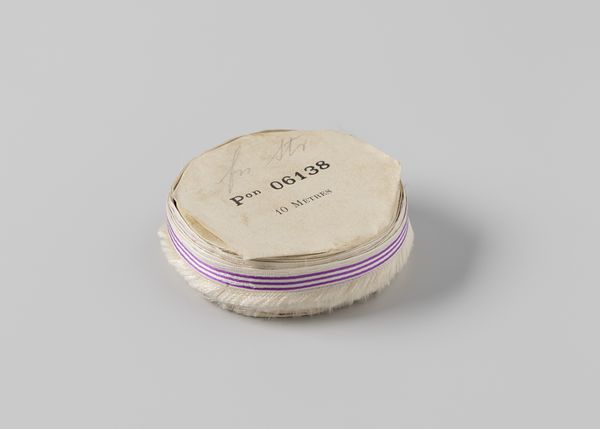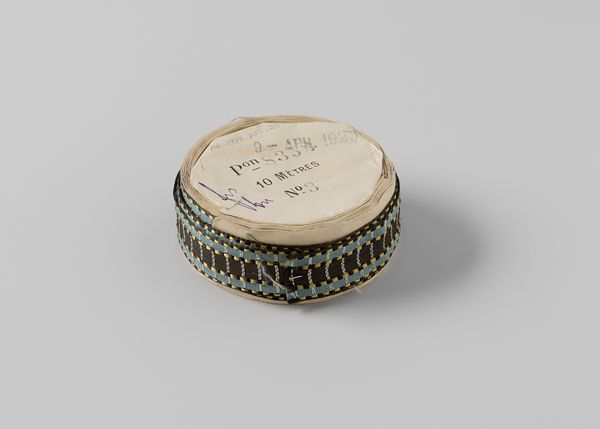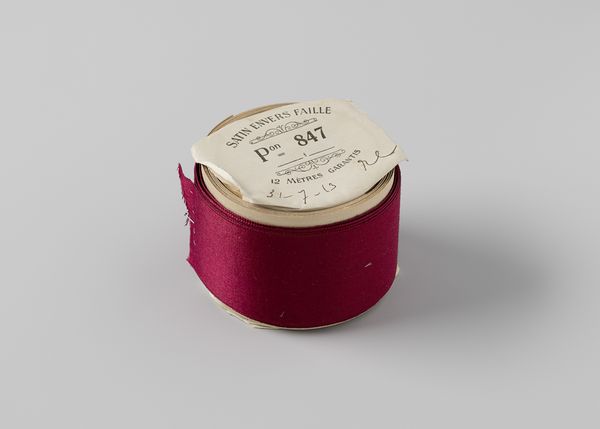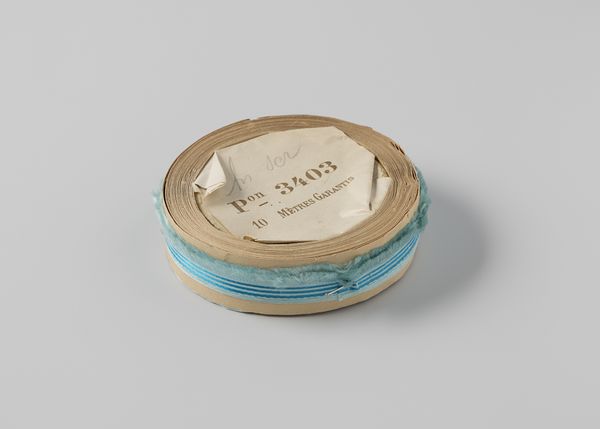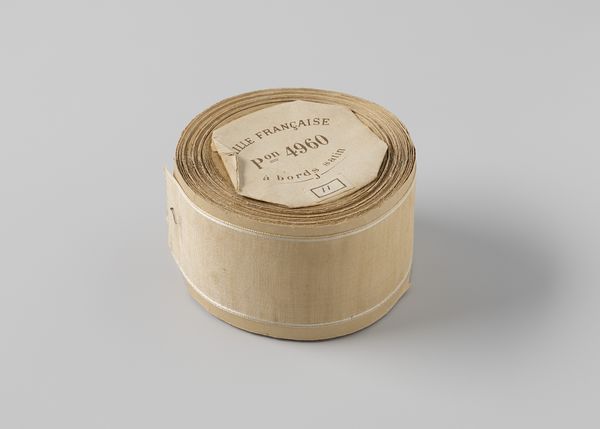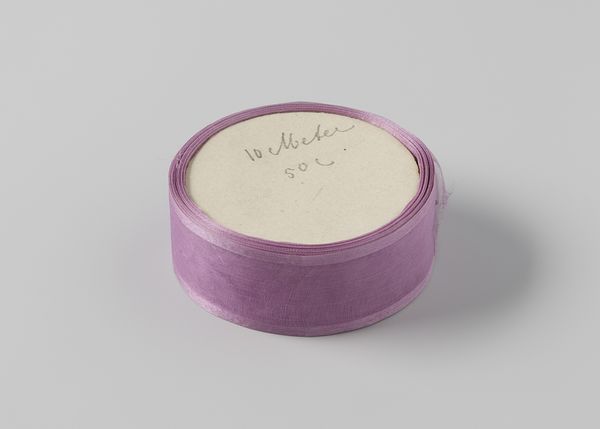
photography
#
studio photography
#
advertising product shot
#
product studio photography
#
product shot
#
still-life-photography
#
product fashion photography
#
lifestyle product photography
#
photography
#
product design photgrpaphy
#
metallic object render
#
product photography
#
retail photography
Dimensions: length 900 cm, width 5.5 cm, height 5.8 cm, diameter 7.2 cm
Copyright: Rijks Museum: Open Domain
Editor: Here we have a photograph entitled "Lint van paars gaas", or "Ribbon of purple gauze," created sometime between 1900 and 1915. It's essentially a product shot: a simple spool of purple ribbon against a plain backdrop. The austerity of the presentation almost makes it look like conceptual art to me! What do you make of it? Curator: It's fascinating to consider this within a materialist framework. It seems like straightforward commercial photography, yet that very function reveals so much. Look at the materiality: the gauze ribbon, likely machine-made, uniform in color, speaks volumes about turn-of-the-century textile production. Editor: So, you're seeing this as less about aesthetic intention and more about what it tells us about industry? Curator: Precisely. The paper label adds another layer. “10 metres garantis” – a guarantee of standardized length, implying mass production and consumer expectations. It prompts us to consider the socio-economic structures at play, where textiles transform from handmade crafts to industrially manufactured goods, altering labor and consumption. Think about the intended consumer and where it might be advertised. Editor: I didn’t even notice the label, I was caught up in the starkness of the image. I'm rethinking the whole purpose. Curator: This photography then blurs lines. What does it mean when photography engages in creating art versus advertising commerce? I find this liminal space especially fertile ground. It’s product shot, but there is also consideration about line and colour. Editor: That tension really highlights the societal shifts happening at the time. Thank you for providing that materialist perspective! It makes me see this object and its function very differently. Curator: My pleasure. It makes me wonder how artists today use and subvert materials in similar ways.
Comments
No comments
Be the first to comment and join the conversation on the ultimate creative platform.
